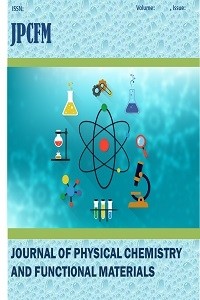Geostatistical Modelling for 134Cs Released from The Fukushima Radioactive Fallout
Geostatistical Modelling for 134Cs Released from The Fukushima Radioactive Fallout
Fukushima, Radioactive Fallout Spatial Analysis, Point Cumulative Semivariogram, 134Cs Transport,
___
- [1] N. Yoshida, Y. Takahashi, Land-surface contamination by radionuclides from the Fukushima Daiichi Nuclear Power Plant accident. Elements 8 (2012) 201–206.
- [2] K. Hirose, 2011 Fukushima Dai-ichi Nuclear Power Plant accident: summary of regional radioactive deposition monitoring results. J Environ Radioact 111 (2012) 13–17.
- [3] TJ. Yasunari, A. Stohl, RS. Hayano, JF. Burkhart, S. Eckhardt, T. Yasunari, Cesium-137 deposition and contamination of Japanese soils due to the Fukushima nuclear accident. PNAS 108 (2011) 19530–19534.
- [4] S. Niksarlıoğlu, F. Külahcı, Z. Şen, Spatiotemporal Modeling and Simulation of Chernobyl Radioactive Fallout in Northern Turkey, J Radioanalytical and Nuclear Chemistry 303 (1) (2015)171-186.
- [5] F. Külahcı, Z. Şen, S. Kazanç, Cesium Concentration Spatial Distribution Modeling by PCSV, WAS Pollution 195 (2008) 151-160.
- [6] I. H. Harms, Modelling the dispersion of 137Cs and 239Pu released from dumped waste in the Kara Sea. Journal of Marine Systems 13 (1997) 1–19.
- [7] M. Van der Perk, T. Lev, A.G. Gillett, et al., Spatial modelling of transfer of long-lived radionuclides from soil to agricultural products in the Chernigov region, Ukraine. Ecological Modelling 128 (2000) 35–50.
- [8] X. Zhang, Y. Long, X. He, J. Fu, Y. Zhang, A simplified 137Cs transport model for estimating erosion rates in undisturbed soil. J Environ Radioact 99 (2008) 1242–1246.
- [9] J.C. Davis, Statistics and Data Analysis in Geology, New York, (2002) 638.
- [10] G. Matheron, Random Structures and Mathematical Geology, Revue De L Institut International De Statistique-Review of The International Statistical Institute 38 (1) (1970).
- [11] I. Clark, Practical geostatistics. Applied Science Publishers, London, 1979.
- [12] I. Clark Practical geostatistics, Applied Science Publishers, London, 2001.
- [13] F. Külahcı, Z. Şen, Potential utilization of the absolute point cumulative semivariogram technique for the evaluation of distribution coefficient. J Hazard Mater 168 (2009)1387–1396.
- [14] Z. Şen, Cumulative semivariogram model of regionalized variables. Math Geol 21 (1989) 891–903.
- [15] Z. Şen, ZZ. Habib, Point cumulative semivariogram of areal precipitation in mountainous regions. J Hydrol 205 (1998) 81–91.
- [16] A.D. Şahin, Z. Şen, A new spatial prediction model and its application to wind records. Theoret Appl Climatol 79 (2004) 45–54.
- [17] A.G. Journel, C.J. Huijbregts, Mining geostatistics. Academic Press, New York, 1978.
- [18] Z. Şen, Point Cumulative Semivariogram for Identification of Heterogeneities in Regional Seismicity of Turkey. Mathematical Geology 30 (1998) 767-787.
- [19] J. C. Davis, Statistics and Data Analysis in Geology, John Wiley & Sons Inc. Canada, 1973.
- ISSN: 2651-3080
- Yayın Aralığı: Yılda 2 Sayı
- Başlangıç: 2018
- Yayıncı: Niyazi BULUT
Cihat AYDIN, Handan AYDİN, Mustafa TAŞKIN
Investigation of the Availability of Apricot Shell in Adsorption Equilibrium Studies
Çiğdem SARICI ÖZDEMİR, Hayrunnisa VARLİKLİOZ, Sinan YAPİCİ
Damage Analysis of Carbon/Glass Fiber Reinforced Composite Materials Connected with Bolt
Determination of Parameters in Fixed Bed with Industrial Waste Used as Adsorbent
Çiğdem SARICI ÖZDEMİR, Muhammed ONAY
Effect of Solvents in the Rubber-Metal Bonding Agent
Effect of Silane in the Rubber-Metal Bonding Agent
Investigation of Fractal Dimension Change in Synthesized CaSO4 Using PSSS
